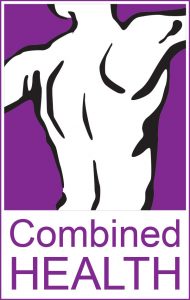Podiatry Introductory Course
Brief Outline
 Theory Content & Lectures:
Theory Content & Lectures:
- TCM vs. Western Acupuncture vs. Dry Needling
- Neurophysiology of Acupuncture & The “Layering Technique”
- Trigger Points Aetiology & Dry Needling
- Needles & Measurements, Contra-indications, Precautions, Infection Control
- Management of Adverse Reactions & Informed Consent
- Scope of Practice, Legal Requirements & Notation
Practical Sessions:
- Needling Instruction and Clinical Reasoning
- Meridian Points and Dry Needling for the Lower Leg Region
- Meridian Points and Dry Needling for the Ankle
- Meridian Points and Dry Needling for the Foot
- Case Study Presentations
Information
 The Theory:
The Theory:
The theoretical content in our introductory course is designed to give podiatrists a solid understanding of the neurophysiological principles that lie behind the effectiveness of western acupuncture and dry needling in the clinical setting. The latest advances in western acupuncture research have led to the development of the concept of the ‘Layering Technique’. This technique offers a sound, clinically reasoned-based approach for podiatrists to effectively modulate pain and sensory-motor responses in their patient populations. It addresses local effects, spinally mediated effects, central nervous system effects, sympathetic system reactions and stimulation of the immune system.
Research continues to progress in the area of trigger point release with dry needling around the world, based on the comprehensive work of Travell and Simons. The latest neurophysiology on trigger points and dry needle release is presented in an easy-to-understand format. The effectiveness of dry needling in treating the myofascial component of common musculoskeletal conditions has been one of the major driving forces behind the development of our courses. We dispel some of the misinformation often propagated around the definition of dry needling, with presentation of four of the most common dry needling approaches.
The Practical:
With the practical sessions taking up the majority of the introductory course, there is considerable time allocated to achieving our two major practical objectives, teaching podiatrists how to needle both safely and confidently. As Western Acupuncture utilises the traditional mapping system for identifying acupuncture points, a solid grounding in surface anatomy and palpation skills is required.

Podiatrists will find the techniques of Dry Needling and Western Acupuncture a perfect compliment a musculoskeletal practitioner’s multimodal approach to the treatment of injury and myofascial dysfunction. We endeavour to teach variations in needling techniques so that all podiatrists leave the course knowing that they can safely practice needling in their current comfort zone. There is room in the practical component of the course to challenge those podiatrists who wish to expand significantly on their skill sets.
The Safety and Legal Issues:
Being mindful of the current litigious nature of the Australian medical system and the need for professional risk management we endeavour to give podiatrists a comprehensive grounding in the legal and ethical obligations involved in using western acupuncture and dry needling.
Advanced Lower Limb Course:
Podiatrists who wish to further expand their knowledge can progress onto to the Advanced Lower Limb Course which has a large emphasis on clinical reasoning and the treatment of various lower limb conditions. It also addresses needling for nerve entrapments, compartment syndromes, CRPS type II, lower limb pathologies and case study workshops. Electroacupuncture technique is also taught on the advanced course.
